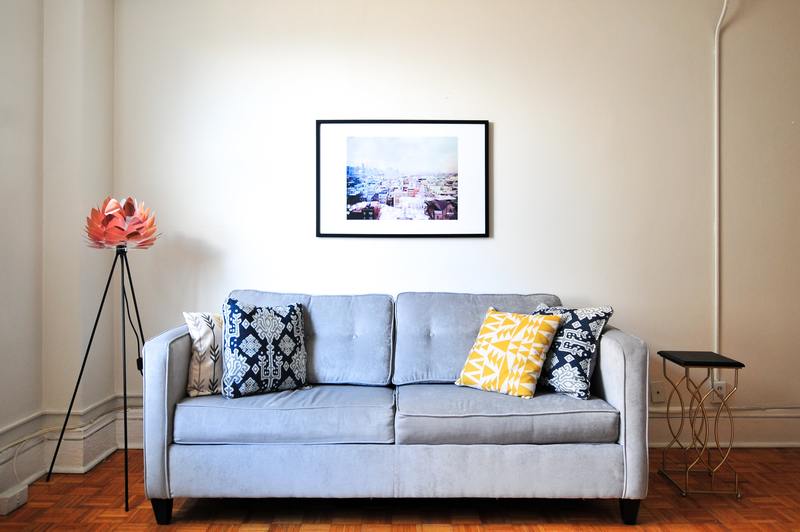Mold is a microorganism that can form on your upholstery. Doing the necessary steps on how to remove mold from upholstery can save you from further damage.
Given our expectations for our furniture’s longevity, we spend some time picking the appropriate furnishings to complement our homes and our style taste. However, even with regular maintenance, upholstery may begin to show signs of wear and require refinishing or replacement.

When your beloved chair or sofa no longer appears, it is ideal or begins to smell musty. There are measures you can take to recover it to its former status.
When mold and mildew infiltrate your property, they spread quickly throughout the structure, including the floorboards, ceilings, and upholstery. If you have mold or mildew in your home, you must clean it up as soon as possible to avoid further damage to your furnishings as well as to safeguard your family’s health.
You must remove it at once as it can swiftly degrade the cloth. Mold on the surface of a material can be removed from the upholstery by following some simple instructions.
How To Kill Mold On Upholstery?
Before you begin, we suggest that you get a mold spore cover and some rubber gloves to protect your hands from the mold spores, as well as any cleaning supplies you will be using. You should always test cleaning materials on a tiny, inconspicuous section of your upholstery before being applied to the entire item.
Start preparing by wearing long sleeves and slacks that you don’t bother discarding once you’ve finished cleaning your upholstery. This is to ensure that you remove mold and mildew from the upholstery.
Here’s a helpful guide on what kind of respirator you need for a mold.
Step #1. Expose upholstery to sunlight
Six to eight hours in direct sunlight will do much for the upholstered furniture. Here’s an additional guide on how to remove mold on furniture fabric.
It is unreliable to brush mold spores off the upholstery in your household, as this could promote further propagation and increase the number of affected areas.
If you can move the items outside on a sunny morning, the natural sunlight and breeze will aid in the removal of any mold that may have formed. When the sun and wind shine on your upholstery, they help eliminate moisture from the fabric and produce an environment in which mildew has difficulty growing.
Step #2. Brush the mold
Cleaning the couch or fabric upholstery with a brush will help to eradicate any visible mold. You might also use a more miniature broom to clean larger pieces of upholstery if necessary.
It would help if you used the vacuum when the brush has completed its work on the visible regions.
Remove the vacuum bag that you used to clean the upholstery once cleaned. For vacuums without bags, treat the inside with a mold-killing disinfectant such as alcohol or vinegar.
Rub it down with a cloth after each cleaning session. Allow the vacuum container to dry before reusing it completely.
Step #3. Spray vinegar
When it comes to cleaning soft furniture, white vinegar spray is excellent. It will assist in removing mold from the fabric of your sofa or cushion.
White vinegar should be used in a spray bottle and carefully sprayed throughout the entire couch or upholstery.
Keep in mind the cloth does not become too wet—just a tiny spritz should work. It is unnecessary to dampen the vinegar spray with water; you must use it fully.
Use a mild detergent or soap to produce large amounts of suds on the object if there had been a load of mold on it in the first place. It would be best only to wipe the suds into the upholstery, and they should be rubbed into the fabric using a cloth.
Then, using a clean damp cloth, wipe the area to remove any remaining residue.
Step #4. Rub alcohol solution
Combine a cup of rubbing alcohol and a cup of water in a mixing bowl. Clean all moldy places on the cloth with a sponge or a rag after they have dried.
You can kill mold on contact with this product, and you may remove mold stains as well. When cleaning a moldy item, prevent using the same sponge on a clean item to avoid spreading mold spores.
Mold worsens by water and moisture, which is what we are attempting to avoid. Using an equal mixture of alcohol and water, thoroughly clean the couch before allowing it to air dry as long as necessary in the sunlight.
Why Does Upholstery Get Moldy?
Upholstery becomes moldy if the setting is conducive to mold growth, as in many humid environments. Mold spores thrive in environments that are wet, warm, and gloomy.
The use of natural light, sufficient airflow, and moisture regulation are all critical in avoiding this from occurring.
Conclusion
Mold or mildew can cause an allergic reaction, which can cause allergies and other illnesses. Knowing how to remove mold from upholstery can save you and your family from any health hazard.
